PRESBYOPIA
Presbyopia
Struggling to read the fine print on a restaurant menu or the text on your phone? If so, you’re not alone. For many adults, presbyopia is more than just an inconvenience; it’s a daily reminder that even simple tasks require extra effort.
The frustration of constantly reaching for reading glasses, struggling with contact lenses, or adjusting to the blur and strain can leave you feeling limited.
But here’s the good news: clear, seamless vision is possible with advanced presbyopia treatments at Envision LASIK Centre,Hyderabad.

What is presbyopia?
Presbyopia is a natural part of aging that typically begins to affect vision around the age of 40. But what exactly is it? Presbyopia occurs when the lens of your eye gradually loses its flexibility, making it harder to focus on nearby objects. While farsightedness affects individuals due to the shape of the eye, presbyopia is caused by changes in eye functionality over time.
⇒Common Symptoms:
- Difficulty reading small text without glasses
- Eye strain or fatigue when focusing on close work
- Holding books or phones at arm’s length to see clearly
- Headaches after prolonged periods of reading or near tasks
This condition can affect your ability to work, read, and enjoy activities you love. The constant reliance on glasses may hamper your confidence or create daily annoyances. However, presbyopia doesn’t have to define how you live your life.
How common is presbyopia?
Presbyopia is something a lot of people have. Around the world, about 1.8 billion folks had it in 2015. Experts think this number will go up to 2.1 billion by 2030.
What causes presbyopia?
As you age, changes happen to your eyes that can cause a condition called presbyopia. When you’re younger, your eye lens is flexible and can easily change shape to focus on things up close or far away. This flexibility helps light land on the back of your eye so you can see clearly.
As you get older, your lens becomes less flexible. It struggles to focus light properly, especially on close-up objects. This starts to happen in your 40s and usually settles down by your mid-60s.
Imagine your eye as a camera. Just like a camera lens can autofocus, your eye lens works with the clear outer part of your eye (called the cornea) to focus light. Here’s how it works:
1.The cornea bends light as it enters your eye.
- There’s a tiny muscle around your lens that can either tighten or relax. This muscle changes the shape of your lens to focus on things. It relaxes for far-away objects and tightens for close-up ones.
- Light lands on the back of your eye, which has a tissue layer called the retina. The retina turns light into signals that your brain understands as images.
- As you age, your lens keeps growing. New layers of cells form, making it thicker and less flexible. This makes it harder for light to focus properly on the retina, causing blurriness when you look at things up close.
How is presbyopia diagnosed?
Eye expert can find out if you have presbyopia by giving you an eye test. During this test, they’ll check how well you see things at different distances. This helps them figure out if you have presbyopia, astigmatism, or if you’re nearsighted or farsighted.
Transforming Vision with Advanced Presbyopia Treatment in Hyderabad
Envision LASIK Centre provides innovative solutions tailored to your eyes and lifestyle. Here are the treatment options available:
Cutting-Edge LASIK for Presbyopia
Leveraging advanced LASIK technology, we reshape the cornea to improve focus for both near and distance vision. By customizing the correction for your unique optical needs, LASIK provides lasting clarity and freedom.
Blended Vision (Monovision Correction)
For those who prioritize near and distance focus, we adjust one eye for close-up clarity and the other for distant viewing using LASIK or contact lens-based strategies. It’s a balanced solution designed for seamless day-to-day activities.
Lens Replacement Surgery
Presbyopia may also be treated with intraocular lenses (IOLs) that replace the aging, inflexible lenses in your eyes. This method is particularly beneficial for individuals with additional refractive errors like cataracts.
Comprehensive Vision Care
Beyond surgical solutions, we provide a full suite of personalized care options to address your unique vision challenges. You can trust us to guide you through every step of your vision correction journey.
Life-Changing Benefits of Presbyopia Treatments
Why live with the limitations of fading near vision when you can enjoy life, eyes wide open? Here’s how treatment can transform your everyday experience:
- Crystal-clear vision: Say goodbye to the blur and regain the ability to see up close with ease.
- Enhanced freedom: No more fumbling for glasses or worrying about misplaced readers.
- Boosted confidence: Reclaim your ability to read, work, and socialize without interruptions.
- Long-term savings: Reduce recurring expenses on glasses and contact lenses.
- Improved quality of life: Focus on living fully instead of struggling with visual inconvenience.
Presbyopia Treatment Cost in Hyderabad
The cost of presbyopia treatment in Hyderabad can vary depending on the type of procedure chosen, the technology used, and the expertise of the surgeon. On average, treatments such as multifocal intraocular lenses (IOLs), refractive lens exchange, or advanced laser procedures may range from ₹40,000 to ₹1,20,000 per eye.
Factors like hospital facilities, pre-operative tests, and post-operative care can also influence the final expense.
At our Hyderabad centre, we provide transparent pricing with flexible payment options, ensuring that patients receive world-class care at affordable costs. During your consultation, our specialists will recommend the most suitable treatment for your eyes and provide a detailed cost estimate tailored to your needs.
The Envision LASIK Centre Difference
At Envision LASIK Centre, we redefine the standards of eye care with a perfect blend of expertise, innovative technology, and patient-centered care.
- Unmatched Expertise
Our highly skilled ophthalmologists and LASIK specialists have years of experience providing customized treatments for presbyopia and a variety of vision conditions. - Advanced Technology
We utilize groundbreaking tools and diagnostic techniques to ensure precise, effective results tailored to your eye’s unique needs. - Personalized Attention
From your initial consultation to post-treatment care, we’re with you every step of the way, tailoring our approach to help you achieve unparalleled results. - Proven Results
With a history of successful outcomes, our patients consistently trust us to deliver clarity and freedom through advanced procedures.
Answers to Your Burning Questions
It’s natural to have concerns when considering presbyopia treatment. Allow us to address some common questions:
- Is presbyopia treatment safe?
Yes! Techniques like LASIK and lens replacement are FDA-approved and highly tested for safety and effectiveness. We use only the most advanced and precise technology. - What is the success rate?
Presbyopia treatments at Envision LASIK Centre boast high satisfaction rates with lasting results for the majority of our patients. - Will it be painful?
Our procedures are minimally invasive, and patients report little to no discomfort during and after treatment. - How long will recovery take?
Most patients notice immediate improvement after surgery and can return to daily activities within a few days. - Will I still need glasses later in life?
While results vary, many patients remain independent from glasses for years after treatment. We’ll tailor the procedure to deliver the best possible outcome for you.
It’s Time to Rediscover Life Without Limits
Are you tired of blurred vision holding you back? It’s time to regain control and experience the joy of clear, effortless sight. At Envision LASIK Centre, we’re dedicated to helping you live with confidence and clarity.
Call us now to book your consultation or vision screening. Your brighter, clearer future awaits. Begin your vision transformation today!


